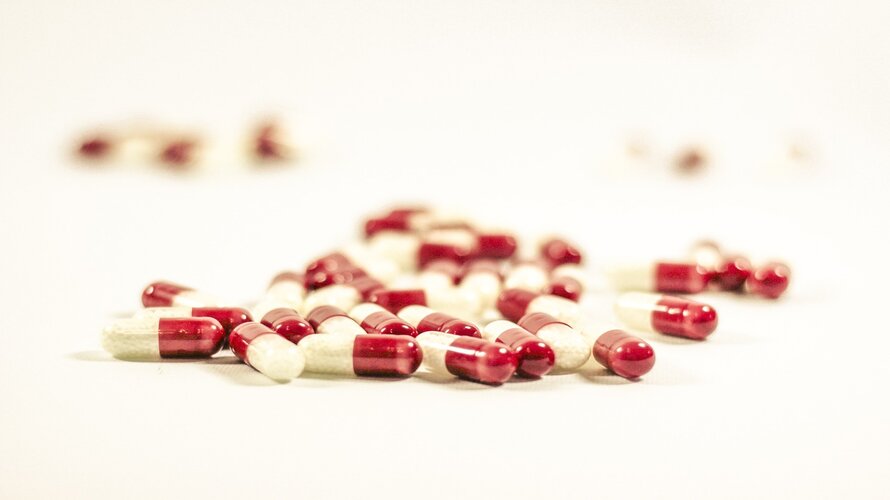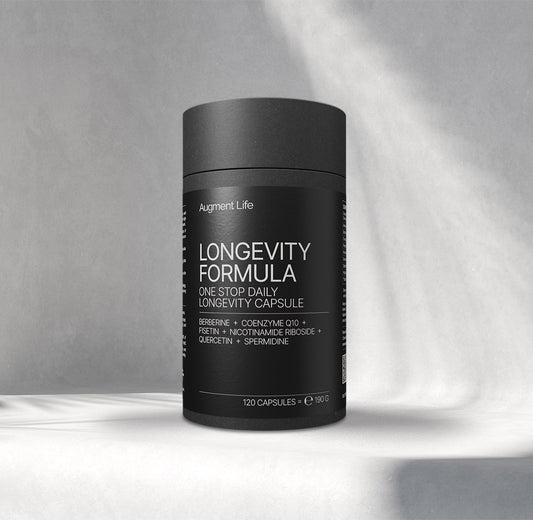Η ραπαμυκίνη (Sirolimus, Rapamune), ένα φάρμακο που αναπτύχθηκε αρχικά για την πρόληψη της απόρριψης των μεταμοσχεύσεων οργάνων, έχει τραβήξει την προσοχή λόγω των πιθανών αντιγηραντικών της ιδιοτήτων. Αναστέλλοντας τον δίαυλο mTOR, ο οποίος διαδραματίζει σημαντικό ρόλο στην ανάπτυξη και τον μεταβολισμό των κυττάρων, η ραπαμυκίνη έχει παρουσιάσει πολλά υποσχόμενα αποτελέσματα στην επέκταση της διάρκειας ζωής σε μελέτες σε ζώα.
Αυτό το άρθρο διερευνά την επιστήμη πίσω από τη ραπαμυκίνη, τα πιθανά οφέλη της για τη γήρανση και την τρέχουσα κατάσταση της έρευνας, καθώς οι επιστήμονες διερευνούν τη βιωσιμότητά της ως εργαλείο για την προώθηση της μακροζωίας στον άνθρωπο.
Τι είναι η ραπαμυκίνη;
Η ραπαμυκίνη είναι ένα φάρμακο που αναστέλλει τον δίαυλο mTOR, ο οποίο είναι ένας σημαντικός ρυθμιστής της κυτταρικής διαίρεσης και ολόκληρης της διαδικασίας γήρανσης. Αν θέλετε να μάθετε τι ακριβώς είναι ο δίαυλος mTOR, διαβάστε το άρθρο μας σχετικά με αυτό εδώ: Είναι οι δίαυλοι AMPK και mTOR pathways το μοριακό κλειδί για τη μακροζωία;
Ωστόσο, για να κατανοήσουμε τι κάνει η ραπαμυκίνη, αρκεί να γνωρίζουμε ότι σταματά ή επιβραδύνει τη δράση ενός σημαντικού ρυθμιστή των κυτταρικών διεργασιών. Η ραπαμυκίνη είναι επίσης γνωστή με τις εμπορικές ονομασίες Sirolimus ή Rapamune και συνταγογραφείται κυρίως ως ανοσοκατασταλτικό φάρμακο μετά από μεταμόσχευση οργάνων.
Η ραπαμυκίνη μπορεί να σταματήσει τα λευκά αιμοσφαίρια από το να αναγνωρίσουν και να επιτεθούν στο νεομεταμοσχευμένο όργανο διακόπτοντας ορισμένα σήματα που προάγουν την ανάπτυξη και τη διαφοροποίησή τους. Αυτό είναι ευεργετικό όσον αφορά τις μεταμοσχεύσεις, αλλά μπορεί πραγματικά να μειώσει την ικανότητα του ανοσοποιητικού σας συστήματος να καταπολεμήσει και άλλες λοιμώξεις
(1).
Οι ιατρικά εγκεκριμένες χρήσεις της ραπαμυκίνης είναι:
- Πρόληψη της απόρριψης οργάνων που έχουν μεταμοσχευθεί (κυρίως νεφρικά μοσχεύματα),
- Θεραπεία της λεμφαγγειολεϊομυομάτωσης,
- Η ραπαμυκίνη και τα ανάλογα της (rapalogs) χρησιμοποιούνται ορισμένες φορές στη θεραπεία του προχωρημένου καρκίνου των νεφρών.

Ποια τρόφιμα περιέχουν ραπαμυκίνη;
Η ραπαμυκίνη δεν υπάρχει σε κάποιο τρόφιμο, αλλά παράγεται φυσικά από ένα βακτήριο που ονομάζεται Streptomyces hygroscopicus. Αυτό το βακτήριο ανακαλύφθηκε για πρώτη φορά στο έδαφος του νησιού του Πάσχα, του οποίου το μητρικό όνομα είναι Rapa Nui. Έτσι πήρε η ραπαμυκίνη το επίσημο όνομά της!
Στις μέρες μας, η ραπαμυκίνη συντίθεται ως επί το πλείστον χημικά για να καλύψει τις ποσότητες που απαιτούνται για την ιατρική βιομηχανία (2).
Ραπαμυκίνη - Δοσολογία για ανθρώπους
Μέχρι στιγμής, η ραπαμυκίνη έχει εγκριθεί μόνο ως ανοσοκατασταλτικό, για παράδειγμα μετά από δωρεά οργάνων. Σε αυτή την περίπτωση, λαμβάνεται συνήθως μαζί με ένα κορτικοστεροειδές. Ακόμα και για το σκοπό αυτό, με πολλές γνωστές περιπτώσεις, η κατάλληλη δοσολογία της ραπαμυκίνης είναι ατομική και καθορίζεται εξετάζοντας την πλήρη έκθεση της υγείας σας.
Ωστόσο, στις περισσότερες περιπτώσεις, η συνταγογραφούμενη δόση ραπαμυκίνης είναι η ακόλουθη:
- Για την πρόληψη της απόρριψης νεφρικού μοσχεύματος - 2 χιλιοστόγραμμα την ημέρα μετά από μια αρχική εφάπαξ δόση 6 mg, για ενήλικες που ζυγίζουν πάνω από 40 κιλά.
- Για τη θεραπεία της λεμφαγγειολεϊομυομάτωσης - 2 χιλιοστόγραμμα την ημέρα, για ενήλικες.
Ενώ, φυσικά, υπάρχει μεγάλο ενδιαφέρον στην επιστημονική κοινότητα γύρω από τη ραπαμυκίνη και τα οφέλη της κατά της γήρανσης, η ραπαμυκίνη δεν έχει προς το παρόν εγκριθεί πουθενά ως συμπλήρωμα διατροφής για τον σκοπό αυτό.
Ωστόσο, έχουν διεξαχθεί αρκετές μελέτες σε ανθρώπους σχετικά με τη ραπαμυκίνη και τη γήρανση, τα αποτελέσματα των οποίων είναι ελπιδοφόρα! Στην επόμενη ενότητα, θα συζητήσουμε ποια ήταν τα αποτελέσματα αυτών των μελετών και ποιες ήταν οι δόσεις που εφαρμόστηκαν.
Ραπαμυκίνη - Αντιγηραντικά οφέλη
Όπως συμβαίνει με κάθε νέο δυνητικό φάρμακο ή θεραπεία, η έρευνα ξεκινά σε εργαστηριακά μοντέλα, όπως οι κυτταροκαλλιέργειες και τα ζώα. Ένα μεγάλο σύνολο επιστημονικών στοιχείων έδειξε ότι η αναστολή του διαύλου mTOR επεκτείνει τη διάρκεια ζωής των ζυμομυκητών, των σκουληκιών, των φρουτόμυγων και των ποντικών (3).
Οι επιστήμονες υπέθεσαν ότι αυτό συμβαίνει επειδή όταν αναστέλλεται ο mTOR, η κυτταρική διαίρεση συνεχίζεται και η αποικοδόμηση των κυττάρων και των πρωτεϊνών σταματά. Αυτή η έρευνα ανέδειξε επίσης το mTOR ως το κεντρικό μέρος της διαδικασίας γήρανσης και τη ραπαμυκίνη ως έναν πολύ αποτελεσματικό και ισχυρό αναστολέα του mTOR.
Πρόκειται για μια πολύ συναρπαστική νέα πιθανή χρήση της ραπαμυκίνης και η κοινότητα της αντιγήρανσης είναι προφανώς πρόθυμη να μάθει περισσότερα. Αυτό οδήγησε στη διεξαγωγή μόλις είκοσι διαφορετικών μελετών σε ανθρώπους σχετικά με τις επιδράσεις της ραπαμυκίνης στη γήρανση και στις ασθένειες που σχετίζονται με τη γήρανση.
Δεδομένου ότι είναι σχετικά δύσκολο να παρακολουθηθεί η διάρκεια ζωής κάποιου (που θα ήταν μια μάλλον μακρά και δαπανηρή μελέτη), οι περισσότερες μελέτες εξέτασαν πώς η ραπαμυκίνη βοηθά τους ανθρώπους που πάσχουν από ασθένειες που σχετίζονται με την ηλικία.
Ραπαμυκίνη - Δοσολογία για αντιγήρανση
Στην περίπτωση μελετών σε ανθρώπους σχετικά με τις επιδράσεις της ραπαμυκίνης, η γήρανση θεωρείται ως κατάσταση κυτταρικής αποδόμησης που έχει ως αποτέλεσμα ασθένειες που σχετίζονται με την ηλικία διαφορετικών ανθρώπινων συστημάτων. Αυτά ήταν:
- καρδιαγγειακό σύστημα,
- μυϊκό σύστημα,
- ενδοκρινικό σύστημα,
- νευρικό σύστημα,
- ανοσοποιητικό σύστημα,
- δερματικό σύστημα (δέρμα, μαλλιά και νύχια).
Από αυτά, η ραπαμυκίνη είχε θετική επίδραση στη βελτίωση του καρδιαγγειακού, του ανοσοποιητικού και του δερματικού συστήματος. Άλλα συστήματα όπως το πεπτικό, το νεφρικό ή το αναπνευστικό δεν δοκιμάστηκαν ακόμη.
Αυτά ήταν τα αποτελέσματα των μελετών όπου η ραπαμυκίνη είχε θετικά αποτελέσματα:
- Οι ασθενείς με πνευμονική υπέρταση είχαν σημαντικά καλύτερες παραμέτρους μετά τη λήψη 0, 75 mg everolimus (παράγωγο ραπαμυκίνης)κάθε 12 ώρες για 6 μήνες. Για παράδειγμα, η πνευμονική αρτηριακή πίεση και η αγγειακή αντίσταση μειώθηκαν και η μέγιστη κατανάλωση οξυγόνου και ο καρδιακός φόρτος εργασίας αυξήθηκαν (4),
- Οι ασθενείς με αποδόμηση της ωχράς κηλίδας είχαν σημαντικές βελτιώσεις μετά τη λήψη 440 μg ενδοϋαλώδους ραπαμυκίνης κάθε 2 μήνες (τρεις δόσεις) (5),
- Η λήψη 6 mg/ημέρα everolimus από το στόμα, για 12 εβδομάδες, βελτίωσε σημαντικά τα συμπτώματα και την κατάσταση των ασθενών που πάσχουν από ρευματοειδή αρθρίτιδα (6),
- Η λήψη του everolimus (0 * 5 mg/ημέρα ή 5 mg/εβδομάδα από το στόμα, για 6 εβδομάδες) κατά τη λήψη εμβολίου κατά της γρίπης αύξησε την αποτελεσματικότητα του εμβολίου σε ηλικιωμένους ασθενείς (7),
- Σε υγιή άτομα, η ραπαμυκίνη (0 * 5 mL τοπικά, κάθε 24-48 ώρες για 8 μήνες) μείωσε σημαντικά την έκφραση των δεικτών γήρανσης του δέρματος στο επιδερμικό στρώμα του δέρματος (8).
Φαίνεται ότι η ραπαμυκίνη και τα παράγωγά της μπορούν να βοηθήσουν σε μια πληθώρα ασθενειών που εμφανίζονται περισσότερο καθώς γερνάμε. Δεν είναι ακόμα σαφές εάν μπορούμε να σταματήσουμε τη γήρανση, αλλά καθώς πολλές ασθένειες εμφανίζονται ως αποτέλεσμα της γήρανσης των κυττάρων, η ραπαμυκίνη μπορεί να βοηθήσει με έναν τρόπο να αποτρέψει την εμφάνισή τους ή να τα θεραπεύσει.

Υπάρχουν επί του παρόντος εννέα συνεχιζόμενες δοκιμές σχετικά με τις επιδράσεις της ραπαμυκίνης στη γήρανση σε υγιείς ανθρώπους, οι οποίες θα ελέγξουν πώς η ραπαμυκίνη επηρεάζει τους φαινοτυπικούς και λειτουργικούς βιοδείκτες γήρανσης σε μεσήλικες και ηλικιωμένους. Αυτές οι δοκιμές θα δοκιμάσουν τις γνωστικές λειτουργίες, την υγεία της καρδιάς και των πνευμόνων, τους μυς, τους επιγενετικούς δείκτες, τη γήρανση των ωοθηκών, την ευαισθησία στην ινσουλίνη και πολλά άλλα (9).
Τα αποτελέσματα θα απαντήσουν σίγουρα σε περισσότερες ερωτήσεις σχετικά με το εάν και πώς μπορούμε να χρησιμοποιήσουμε τη ραπαμυκίνη και τα παράγωγά της για να αποτρέψουμε τη γήρανση και τις ασθένειες που σχετίζονται με την ηλικία..
Ραπαμυκίνη - Παρενέργειες
Η ραπαμυκίνη είναι ένα πολύ δραστικό φάρμακο με μακρύ κατάλογο προφυλάξεων ασφαλείας και πιθανές διασταυρούμενες αλληλεπιδράσεις με άλλα φάρμακα και παρενέργειες. Η λήψη ραπαμυκίνης χωρίς τη συμβουλή ενός παρόχου υγειονομικής περίθαλψης ή χωρίς ιατρική συνταγή για μια σοβαρή ιατρική κατάσταση μπορεί να είναι πολύ επικίνδυνη.
Ο κατάλογος των παρενεργειών της ραπαμυκίνης είναι αρκετά μεγάλος, επομένως θα επισημάνουμε μόνο τις πιο συχνές παρενέργειες. Αυτός ο κατάλογος έχει ληφθεί από την επίσημη ιστοσελίδα της κλινικής Mayo, στον οποίο μπορείτε να έχετε πρόσβαση εδώ για να δείτε και τις σπάνιες και λιγότερο συχνές παρενέργειες (10).
Οι πιο συχνές παρενέργειες της ραπαμυκίνης είναι:
- συσσώρευση πύου,
- νευρικότητα,
- οσφυαλγία,
- μαύρα ή κόκκινα, πυώδη κόπρανα,
- αιμορραγία από τα ούλα ή τη μύτη,
- θολή όραση,
- πόνοι στο σώμα,
- πόνοι στα κόκκαλα,
- μελανιές,
- κάψιμο ή τσούξιμο του δέρματος,
- κάψιμο κατά την ούρηση,
- κάψιμο, ξηρότητα ή φαγούρα στα μάτια,
- κάψιμο, μυρμήγκιασμα, μούδιασμα ή πόνος στα χέρια, τις παλάμες, τα πέλματα ή τα πόδια,,
- αλλαγές στην ψυχική κατάσταση,
- αλλαγές στο χρώμα του δέρματος,
- πόνος στο στήθος,
- κρυάδες,
- σύγχυση,
- βήχας,
- σκούρα ούρα ή ούρα με αίμα,
- κώφωση,
- μειωμένη παραγωγή ούρων,
- μειωμένη όραση,
- δυσκολία στην αναπνοή ή στην κατάποση,
- διασταλμένες φλέβες του λαιμού,
- εκκρίσεις από τα μάτια,
- ζαλάδα,
- υπνηλία,
- ξηροστομία,
- πόνος στο αυτί,
- έντονα δάκρυα,
- πόνος στα μάτια,
- τριχοφυΐα προσώπου στις γυναίκες,
- λιποθυμία ή ζάλη όταν σηκώνεστε,
γρήγορος, αργός ή ακανόνιστος καρδιακός παλμός, - πυρετός,
- έξαψη ή ερυθρότητα του δέρματος, ειδικά στο πρόσωπο και το λαιμό,
- γενικό αίσθημα δυσφορίας ή ασθένειας,
- αυξημένη πείνα,
- αυξημένη εμμηνορροϊκή ροή ή κολπική αιμορραγία,
- κνησμός, πόνος, ερυθρότητα, πρήξιμο, ευαισθησία ή ζεστασιά στο δέρμα,
- έλλειψη ή απώλεια όρεξης,
- μεγάλες, επίπεδες, μπλε ή μωβ κηλίδες στο δέρμα,,
- απώλεια σεξουαλικής ικανότητας, επιθυμίας, κίνησης ή απόδοσης,
- απώλεια φωνής,
- μυϊκοί πόνοι,
- ρινική συμφόρηση,
- ναυτία ή έμετος,
- μούδιασμα ή μυρμήγκιασμα γύρω από τα χείλη, τα χέρια ή τα πόδια,
- πόνος στο στήθος, στη βουβωνική χώρα ή στα πόδια, ειδικά στις γάμπες,
- επώδυνες πληγές ή φουσκάλες στα χείλη, τη μύτη, τα μάτια ή τα γεννητικά όργανα,
- ωχρό δέρμα,
- παρατεταμένη αιμορραγία από κοψίματα,
- γρήγορος καρδιακός παλμός,
- εξανθήματα,
- κόκκινα ή σκούρα καφέ ούρα,
- ερυθρότητα ή πρήξιμο στο αυτί,
- ερυθρότητα, πόνος ή πρήξιμο του ματιού, του βλεφάρου ή της εσωτερικής επένδυσης του βλεφάρου,
- βουητό στα αυτιά,
- ρινική καταρροή,
- επιληπτικές κρίσεις,
- αίσθημα τσιμπήματος,
- έντονη δυσκοιλιότητα,
- έντονη τάση για εμετό,
- έντονος, ξαφνικός πονοκέφαλος,
- συγκεχυμένη ομιλία,
- πονόλαιμος,
- πληγές ή λευκές κηλίδες στα χείλη ή στο στόμα,
- κράμπες στο στομάχι, πόνος ή αναστάτωση,
- ξαφνική μείωση της ποσότητας των ούρων,
- ξαφνική απώλεια συντονισμού,
- ξαφνική, σοβαρή αδυναμία ή μούδιασμα στα χέρια ή τα πόδια,
- εφίδρωση,
- πρησμένοι, επώδυνοι ή ευαίσθητοι λεμφαδένες στο λαιμό, τη μασχάλη ή τη βουβωνική χώρα,
- ευαισθησία, πόνος, διόγκωση, εξάψεις, αποχρωματισμός δέρματος, και εξογκώματα,
- επιφανειακές φλέβες πάνω από την πληγείσα περιοχή,
- ρίγος,
- έλκη στα χείλη ή στο στόμα,,
- ασυνήθιστη κόπωση ή αδυναμία,
- αλλαγές στην όραση,
- αδυναμία ή σφίξιμο στα πόδια,
- λευκές κηλίδες στο στόμα ή στη γλώσσα,
- κίτρινο δέρμα και μάτια.
Όσον αφορά τις μελέτες σε ανθρώπους που αναφέραμε παραπάνω, δεν παρατηρήθηκαν απειλητικές για τη ζωή ή σοβαρά ανεπιθύμητες ενέργειες της ραπαμυκίνης (όπως θάνατος ή νοσηλεία). Αναφέρθηκαν κάποιες ήπιες ή μέτριες παρενέργειες, όπως
- αύξηση των τριγλυκεριδίων του ορού,
- λοιμώξεις (λοιμώξεις του ουροποιητικού συστήματος, του ανώτερου αναπνευστικού, του δέρματος και ιγμορίτιδα),
- άφθες,
- ουλίτιδα,
- κυστίδια που μοιάζουν με έρπητα.
Αυτές οι παρενέργειες εξαφανίστηκαν σταδιακά μόλις σταμάτησε η θεραπεία με ραπαμυκίνη ή τα παράγωγά της.
Μπορεί να μην πληροίτε τις προϋποθέσεις για να λάβετε ραπαμυκίνη εάν πάσχετε από οποιαδήποτε από τις ακόλουθες καταστάσεις:
- Προβλήματα πήξης του αίματος,
- Καρδιακή νόσος,
- Υπερλιπιδαιμία,
- Ασθένεια των πνευμόνων,
- Λέμφωμα,
- Περιφερικό οίδημα,
- Πρωτεϊνουρία,
- Καρκίνος του δέρματος,
- Ηπατική νόσος,
- Μεταμόσχευση ήπατος,
- Μεταμόσχευση πνεύμονα.
Υπάρχει ένας μακρύς κατάλογος φαρμάκων με τα οποία η ραπαμυκίνη μπορεί να αλληλεπιδράσει και να ακυρώσει ή να μειώσει τη δραστηριότητά τους. Μπορείτε επίσης να αποκτήσετε πρόσβαση σε αυτήν τη λίστα στην ιστοσελίδα της κλινικής Mayo, τον οποίο μπορείτε να βρείτε εδώ.
Συμπέρασμα
Η ραπαμυκίνη δείχνει πολλά υποσχόμενη ως αντιγηραντική θεραπεία λόγω των επιδράσεών της στο δίαυλο mTOR και την επέκταση της διάρκειας ζωής σε μελέτες σε ζώα, δεν υπάρχει αμφιβολία επ' αυτού. Ωστόσο, παραμένει μη εγκεκριμένη και πειραματική γι' αυτή τη χρήση στον άνθρωπο. Απαιτείται περισσότερη έρευνα, ώστε να μπορέσουμε να κατανοήσουμε πλήρως τις μακροπρόθεσμες επιπτώσεις της.
Εάν θέλετε να αναστείλετε τον δίαυλο mTOR με πιο φυσικό τρόπο, σίγουρα θα επωφεληθείτε από την ανάγνωση του άρθρου μας σχετικά με αυτόν. Βρείτε το εδώ:
Βιβλιογραφικές πηγές:
- Dumont FJ, Su Q. Mechanism of action of the immunosuppressant rapamycin. Life Sci. 1996;58(5):373-95. doi: 10.1016/0024-3205(95)02233-3.
- Park SR, Yoo YJ, Ban YH, Yoon YJ. Biosynthesis of rapamycin and its regulation: past achievements and recent progress. J Antibiot (Tokyo). 2010 Aug;63(8):434-41. doi: 10.1038/ja.2010.71.
- Papadopoli D, Boulay K, Kazak L, Pollak M, Mallette FA, Topisirovic I, Hulea L. mTOR as a central regulator of lifespan and aging. F1000Res. 2019 Jul 2;8:F1000 Faculty Rev-998. doi: 10.12688/f1000research.17196.1.
- Seyfarth HJ, Hammerschmidt S, Halank M, Neuhaus P, Wirtz HR. Everolimus in patients with severe pulmonary hypertension: a safety and efficacy pilot trial. Pulm Circ. 2013 Sep;3(3):632-8. doi: 10.1086/674311. Epub 2013 Nov 19.
- Minturn RJ, Bracha P, Klein MJ, Chhablani J, Harless AM, Maturi RK. Intravitreal sirolimus for persistent, exudative age-related macular degeneration: a Pilot Study. Int J Retina Vitreous. 2021 Feb 16;7(1):11. doi: 10.1186/s40942-021-00281-0.
- Bruyn GA, Tate G, Caeiro F, Maldonado-Cocco J, Westhovens R, Tannenbaum H, Bell M, Forre O, Bjorneboe O, Tak PP, Abeywickrama KH, Bernhardt P, van Riel PL; RADD Study Group. Everolimus in patients with rheumatoid arthritis receiving concomitant methotrexate: a 3-month, double-blind, randomised, placebo-controlled, parallel-group, proof-of-concept study. Ann Rheum Dis. 2008 Aug;67(8):1090-5. doi: 10.1136/ard.2007.078808.
- Mannick JB, Teo G, Bernardo P, Quinn D, Russell K, Klickstein L, Marshall W, Shergill S. Targeting the biology of ageing with mTOR inhibitors to improve immune function in older adults: phase 2b and phase 3 randomised trials. Lancet Healthy Longev. 2021 May;2(5):e250-e262. doi: 10.1016/S2666-7568(21)00062-3.
- Chung CL, Lawrence I, Hoffman M, Elgindi D, Nadhan K, Potnis M, Jin A, Sershon C, Binnebose R, Lorenzini A, Sell C. Topical rapamycin reduces markers of senescence and aging in human skin: an exploratory, prospective, randomized trial. Geroscience. 2019 Dec;41(6):861-869. doi: 10.1007/s11357-019-00113-y.
- Lee DJW, Hodzic Kuerec A, Maier AB. Targeting ageing with rapamycin and its derivatives in humans: a systematic review. Lancet Healthy Longev. 2024 Feb;5(2):e152-e162. doi: 10.1016/S2666-7568(23)00258-1.
- Sirolimus (Oral Route). Mayo Clinic.











